When Tzara Albiter Acosta, 18, first arrived at Central Wake High School in Raleigh, her self-confidence was at a low ebb. “I thought, ‘This is just going to be another school,’” she said of the public charter school, which specializes in dropout prevention and recovery.
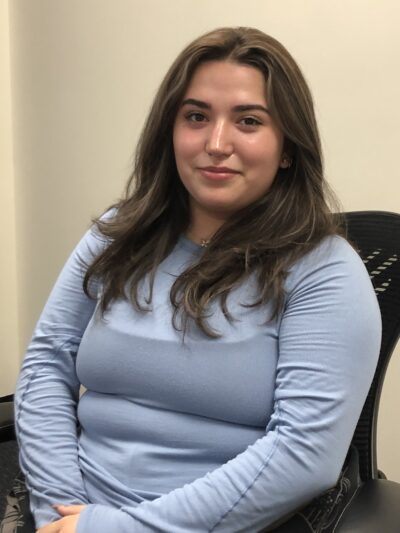
She, like other students at Central Wake, had tried a number of different educational experiences.
Middle school was fraught academically. “I failed so many classes,” said Albiter Acosta, who has attention-deficit/ hyperactivity disorder (ADHD). Resignation had set in. “This is going to be the same thing,” she said.
Still, a realization had emerged about her earlier school experiences. “I wasn’t getting the things I needed,” she said.
Devon Wells, a 17-year-old Central Wake student who also has ADHD, had trouble completing assignments in different school settings. “The resources weren’t really there,” Wells said.
“They’ve tried everything,” said Tom Hanley, Central Wake’s executive principal, of the at-risk students who enroll at his school. Students’ lack of success across multiple school settings “feels like something,” he added. “That goes to their sense of pride and their sense of self-worth.”
At Central Wake, students receive wraparound supports and self-paced learning. Three descriptive pillars — flexible, personalized, supportive — buttress the school’s model. Everything coalesces in pursuit of this singular objective: high school graduation.
“The main goal is to get across the stage,” said Hanley.
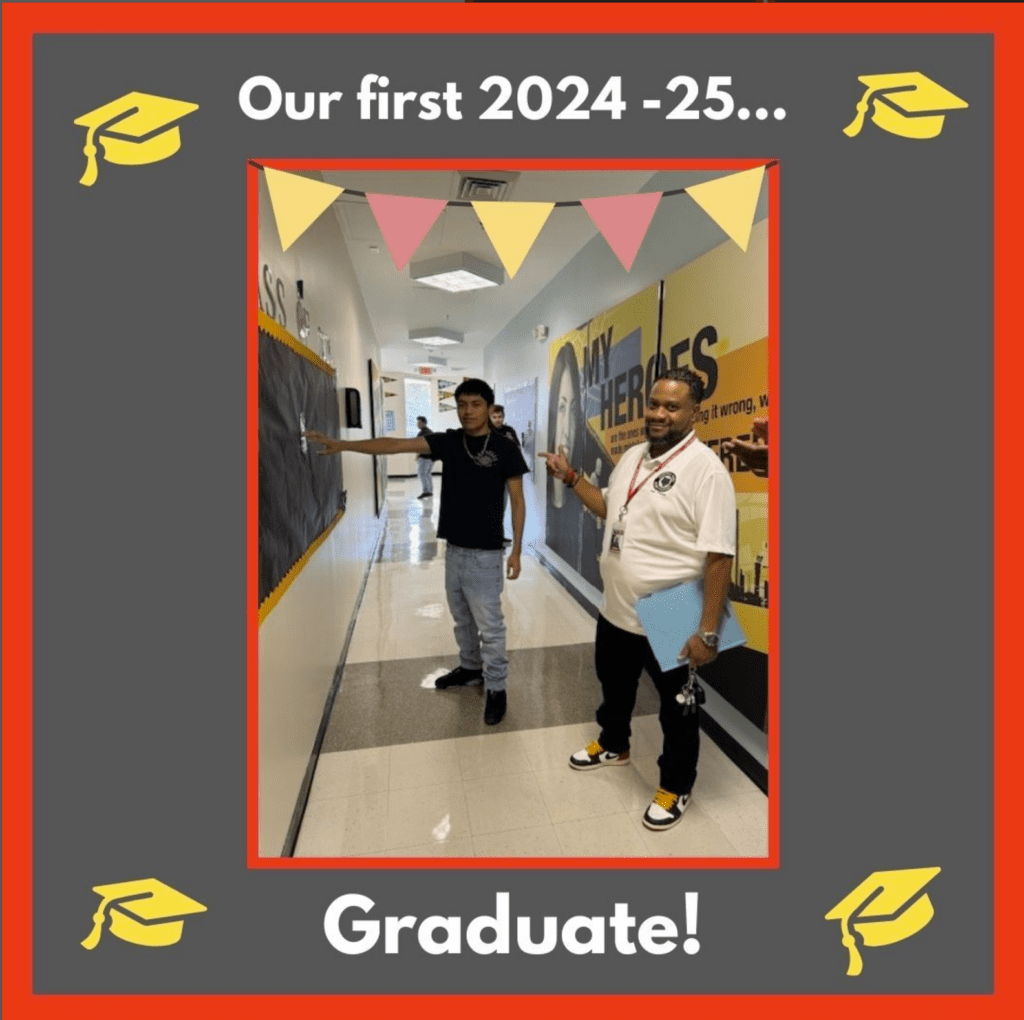
Now the school’s approach is attracting attention from other education leaders.
Notable results — and a visit from a superintendent
Central Wake launched in 2016. After one semester of remediation, 63% of students improve their reading by three or more grade levels, according to Accelerated Learning Solutions, the school management company that partners with Central Wake and 23 other charter schools nationwide. Last year, 98 off-track students graduated from Central Wake with a high school diploma; 63 of them caught up with their original cohort to graduate on time. State officials give the school high marks: Central Wake has earned the highest rating under North Carolina’s “Option C” accountability system for alternative schools.
Intrigued by the school’s model, one leader is taking a closer look. Dr. Robert Taylor, the superintendent of the Wake County Public School System, visited Central Wake on Nov. 12 for a tour and meeting with school leaders.
Taylor’s visit, the first from a sitting superintendent, represents a milestone for the school. It is also strategically important, given Central Wake’s population and pipeline. The school’s 318 students hail from five surrounding counties, but 90% are from Wake County.
“You get it while you’re here”
The typical student referred to Central Wake is 17 or 18 years old. More than 90% come in with reading and math proficiency scores at the fourth grade level, on average. Students’ lives are often complicated: 44% are parents themselves or they’re caring for a family member. Some juggle work and school: 42% have full- or part-time jobs, according to ALS.
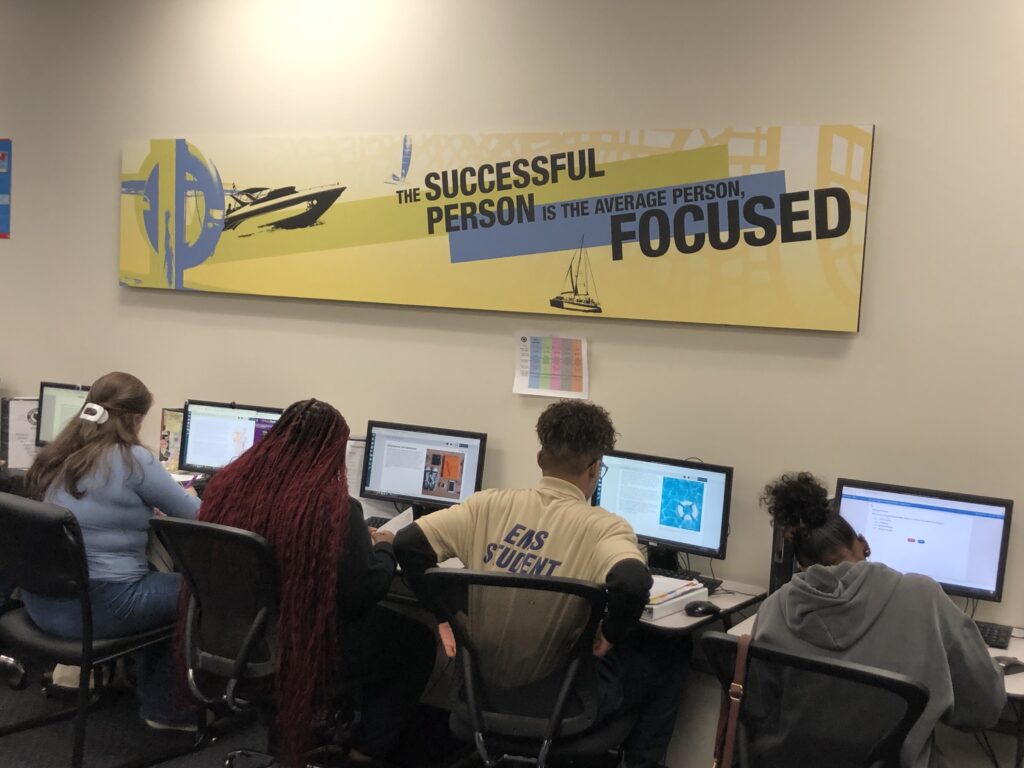
School leaders have structured the day to accommodate these responsibilities. Session blocks run from 7:30 to 11:30 a.m. or noon to 4:00 p.m. daily. Students choose which block works for them.
Extensive supports ensure a holistic approach to learning. Central Wake employs a clinical therapist and two social workers, screening incoming students for psychological and social needs. In addition, the school partners with 12 social and family support agencies. Teachers conduct home visits and serve as attendance coordinators and parent liaisons.
“You get it while you’re here,” said Hanley, of the school’s motto.
Mastery, not grade level, drives progress
Learning at Central Wake is highly customized: Mastery, not grade level, drives progress. In a hybrid approach, instruction is online but takes place in classrooms with teachers as “elbow partners,” said Hanley. “They’re just sitting right there, discreetly.” Students can ask for help without fearing a classroom audience.
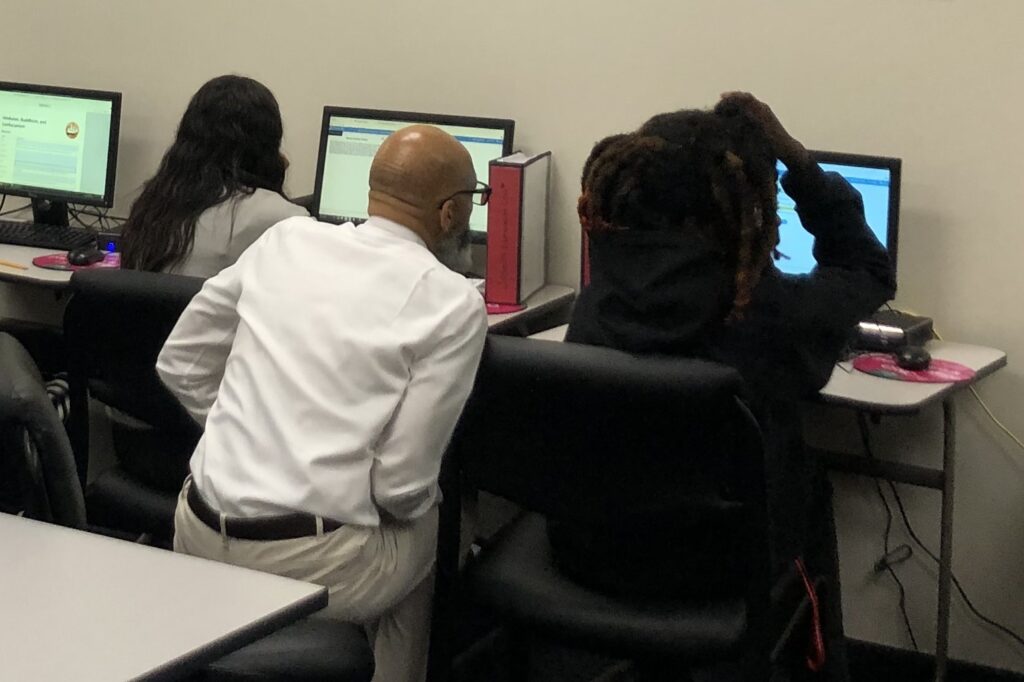
Importantly, the self-paced model removes grade level stigma, noted Hanley. “We want education to be a thing that is making you feel good about yourself and the world — not something that’s making you feel embarrassed or ashamed,” he added. “There’s no shame here. There’s only pride because you’ve taken your own future in your hands and you’re moving forward.”
Even the broader learning environment is structured to optimize learning. Upon arrival, students lock away cell phones for the session block. During transitions, teachers move instead of students.
“They’re here for four hours, and we want to make every minute of that count,” said Hanley.
“What you focus on expands”
School leaders said they also work intentionally to elevate aspirations. “You know that saying, ‘What you focus on expands?’ What we wanted to expand was the ability to succeed and positive self-worth,” said Asa Fleming, a Central Wake founder and the current school board president.
Messages of encouragement are everywhere. Banners emblazoned with inspirational quotes cover hallway and classroom walls. Pennants from colleges are positioned strategically near Central Wake’s entrance. Interns from local colleges arrive onsite to “support, guide, push,” said Hanley. A personalized “Success Dashboard” tracks real-time progress toward graduation.
Central Wake’s success focus also encompasses postsecondary planning. Career coaches offer individualized, tactical support with college or employment. The school also exposes students to myriad career paths and credentialing options, including carpentry, welding, competitive gaming, culinary arts, Occupational Safety and Health Administration (OSHA) certification, and more. Recently, the school won a $1.3 million grant to expand its career and technical education (CTE) program.
What about that critical graduation goal? Because of the self-paced model, students can graduate at any time. When they do, they’re celebrated publicly and with panache. Hanley plays the graduation march, “Pomp and Circumstance,” over the intercom for each graduate. New graduates also visit every classroom, offering a positive and not-so-subtle form of peer pressure.
Supplementing the work of districts
Central Wake hopes to become an official part of a “multi-tiered system of support” for Wake County that augments district options.
“Our model is to work cooperatively with local schools and districts,” Hanley said. “We’re not supplanting. We’re just supplementing what you have.”

During his visit, Taylor seemed interested in exploring a partnership, provided students first exhaust district options. “It is about having another option for parents,” he said. “That’s what I would like a partnership to be.”
“Ultimately, our goal is to see students be successful,” he added.
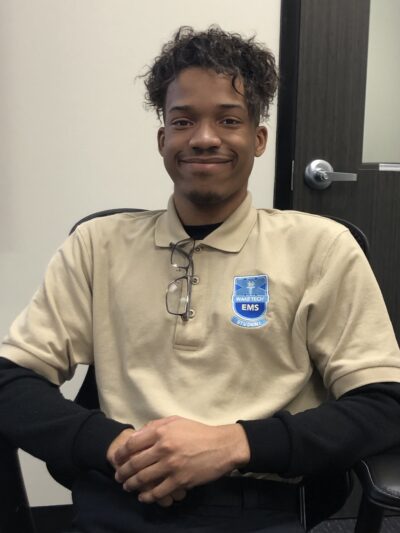
How do Wells and Albiter Acosta view Central Wake? Both had high praise for the educators. “They’re all just amazing at getting you the help you need,” Wells said. He planned to complete Emergency Medical Science (EMS) training through Wake Tech, he said, and hopes to become a paramedic.
Albiter Acosta has felt buoyed by her experience. “Just feeling like you have that support system around you really changes a lot,” she said. Shortly after enrolling, her mindset shifted, she said. She could envision a fresh start.
Shoutouts from teachers along with incentives to complete assignments or maintain perfect attendance have fostered a newfound sense of accomplishment. “You feel … I did do that,” she said. “That feels amazing.” Now, she plans to be a chemical engineer.
Near the end of his visit, Taylor, who met with Wells and Albiter Acosta, had a question for both: “Class of 2025?”
Wells responded readily with a yes.
What about Albiter Acosta? “Heck, yeah!” she exclaimed.
Editor’s Note: Kristen Blair has written for EdNC since 2015. She currently serves as the communications director for the North Carolina Coalition for Charter Schools. Central Wake High School is part of the coalition.




